An open-access digital art market history project by the Module Art Market Studies, Department of Art History, University of Cologne.
In the late 1960s, the Rhineland developed into a world-class art centre, with a high density of galleries. In 1968, Günther Engels thus titled a report in the daily newspaper Kölnische Rundschau ‘Köln, heimliche Hauptstadt des Kunsthandels’ (Cologne, the Secret Capital of the Art Trade).
The ART | GALLERY GIS | COLOGNE was developed as a platform to scientifically research and visualize these developments for the period 1967-1997 on an empirical basis. Methodologically, different visualization approaches were chosen for the platform: In addition to the digital, interactive map, which is the focus of the project, texts and statistics were also integrated in order to enable the user to take different cognitive approaches. In two project steps, different data sets were used and processed in order to focus on the following actors:
1. Kunstmarkt Köln->ART COLOGNE and its Exhibitors (1967-1997)
2. Places and Protagonists of the Art Trade in Cologne (1967-1997)
The concept behind the Kunstmarkt Köln → ART COLOGNE was developed by the Cologne-based gallery owners Hein Stünke and Rudolf Zwirner. In 1966, together with sixteen other German gallery owners, they founded the Verein progressiver deutscher Kunsthändler, the sole task of which was to organise this art fair. In 1973, the association was re-established as the European Art Dealers Association and, in 1974, was superseded as organiser of the fair by the Federal Association of German Galleries (known under its German acronym BVDG). In addition to the practical organisation of the art fair, the professional activities of these associations were developed consistently further. In 1997, the ART COLOGNE was then taken over by Koelnmesse. The BVDG became, and remains to this day, the so-called ‘ideal partner’ of the ART COLOGNE. This caesura also marks the preliminary end of the investigation period of the ART | GALLERY GIS | COLOGNE.
